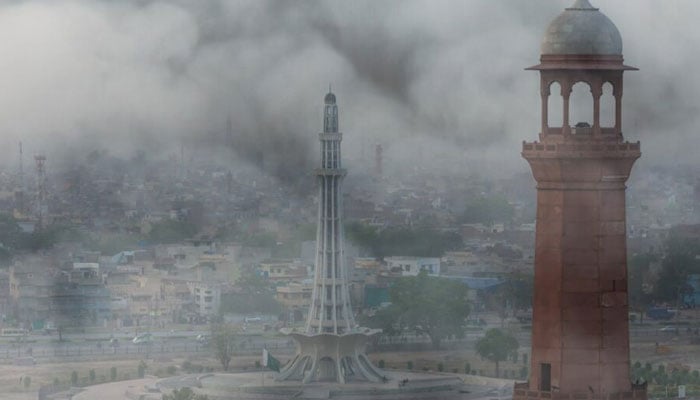LAHORE: Air pollution in Punjab remains dangerously high, with Lahore once again topping the list of the world’s most polluted cities on Wednesday.
According to the global monitoring agency IQAir, Lahore’s overall Air Quality Index (AQI) reached 403, which falls in the “hazardous” category and poses serious health risks. In comparison, India’s capital New Delhi recorded an AQI of 235.
Punjab’s Environment Department reported that at 6 a.m., air quality in several parts of Lahore was extremely poor. Kahna Nau, GT Road, and Egerton Road recorded AQI levels as high as 500, while Shahdara was at 391, DHA Phase 6 at 371, Burki Road at 361, and Multan Road at 344. The air was slightly better near Wagah Border, where AQI stood at 176.
Other major cities also showed poor air quality: Sargodha (344), Faisalabad (296), Multan (287), Gujranwala (274), Kasur (257), Sheikhupura (245), D.G. Khan (217), Sialkot (162), Bahawalpur (154), and Rawalpindi (130).
Experts predict Lahore’s AQI will fluctuate between 245 and 275 during the day. Pollution is expected to worsen in the early morning hours due to low temperatures and heavy traffic but may slightly improve in the afternoon before rising again at night.
Meteorologists forecast temperatures between 20°C and 31°C with light winds of 1–10 km/h. Rising dust, traffic emissions, and waste burning are the main reasons for the spike in pollution.
Environmental data shows that October and November have consistently been Lahore’s most polluted months over the past four years. Despite some yearly variation, the city has not experienced a single “good air quality” day during this period.
Officials say that stubble burning, vehicle emissions, and seasonal weather changes are key contributors. The government has introduced several anti-smog measures, but experts stress that citizen cooperation is essential.
Authorities urge residents to wear masks, avoid burning waste, and maintain vehicles properly to help reduce pollution levels.

